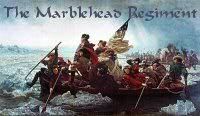Dydd Gwyl Dewi hapus!
According to the Catholic Encyclopedia,
Bishop and Confessor, patron of Wales. He is usually represented standing on a little hill, with a dove on his shoulder. From time immemorial the Welsh have worn a leek on St. David's day, in memory of a battle against the Saxons, at which it is said they wore leeks in their hats, by St. David's advice, to distinguish them from their enemies. He is commemorated on 1 March.Not much is actually, factually known about St. David, but there is much to his legend:
According to these writers St. David was the son of Sant or Sandde ab Ceredig ab Cunnedda, Prince of Keretica (Cardiganshire) and said by some to be King Arthur's nephew, though Geoffrey of Monmouth calls St. David King Arthur's uncle. The saint's mother was Nonna, or Nonnita (sometimes called Melaria), a daughter of Gynyr of Caergawch. She was a nun who had been violated by Sant. St. David's birth had been foretold thirty years before by an angel to St. Patrick. It took place at "Old Menevia" somewhere about A.D. 454. Prodigies preceded and accompanied the event, and at his baptism at Porth Clais by St. Elvis of Munster, "whom Divine Providence brought over from Ireland at that conjuncture", a blind man was cured by the baptismal water. St. David's early education was received from St. Illtyd at Caerworgorn (Llantwit major) in Glamorganshire.More at Third World County. (Curtsy to Angel for linking to it first)
Afterwards he spent ten years studying the Holy Scriptures at Whitland in Carmarthenshire, under St. Paulinus, (Pawl Hen), whom he cured of blindness by the sign of the cross. At the end of this period St. Paulinus, warned by an angel, sent out the young saint to evangelize the British. St. David journeyed throughout the West, founding or restoring twelve monasteries (among which occur the great names of Glastonbury, Bath, and Leominster), and finally settled in the Vale of Ross, where he and his monks lived a life of extreme austerity.
---
With the permission of King Arthur he removed his see from Caerleon to Menevia, whence he governed the British Church for many years with great holiness and wisdom. He died at the great age of 147, on the day predicted by himself a week earlier. His body is said to have been translated to Glastonbury in the year 966.
St. David's Cathedral at Pembrokeshire, Wales is here. It was "Built upon the site of St David's 6th century monastery." You can see the floor plan here.
Here is a link to a site for St. David's, where St. David's Cathedral is located. You can look at it in Cymraeg (Welsh) or English. Send St. David's Day e-cards.
Read the Britannia Biographies biography of "The Holiest Son of Wales.".
Here is some interesting information about St. David's Day (and the saint) from the BBC.
More about St. David's Day here and here and here.
 I Remember
I Remember
















































<< Home